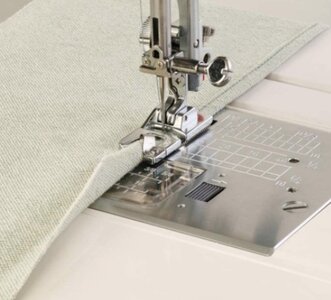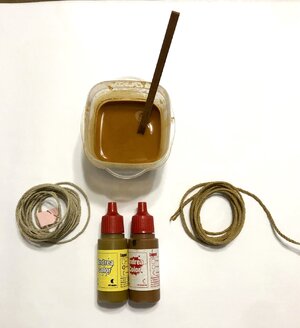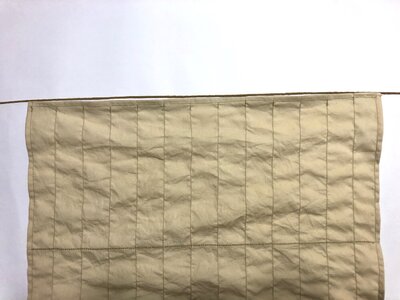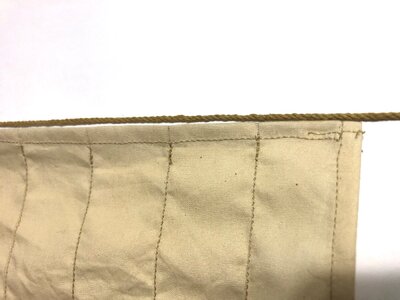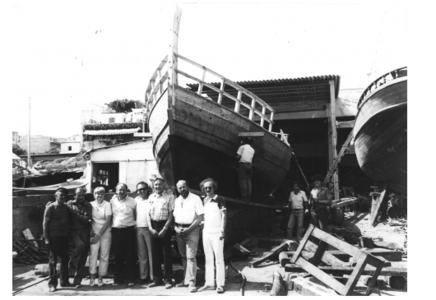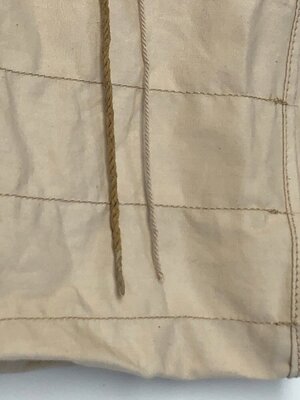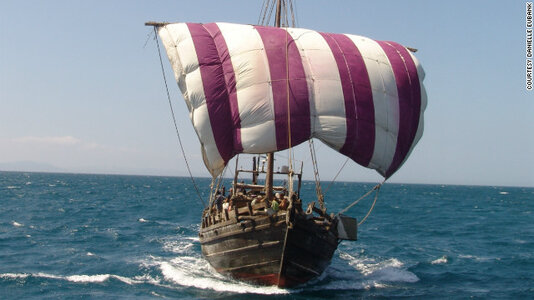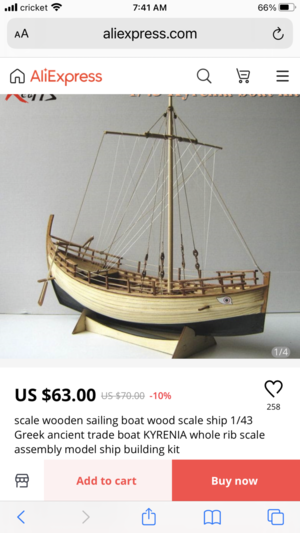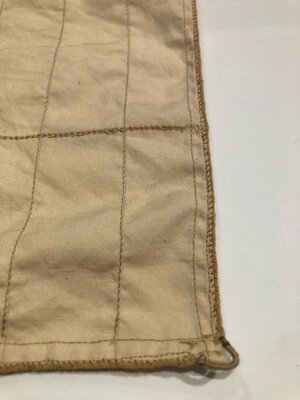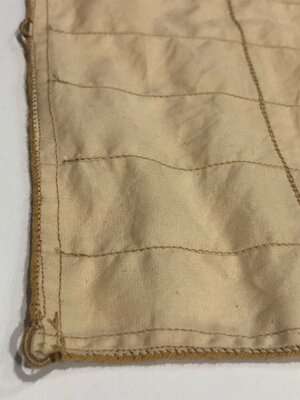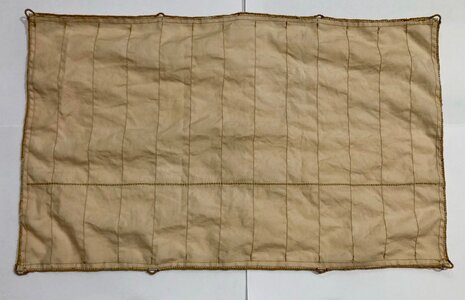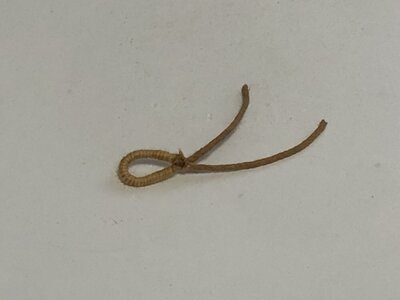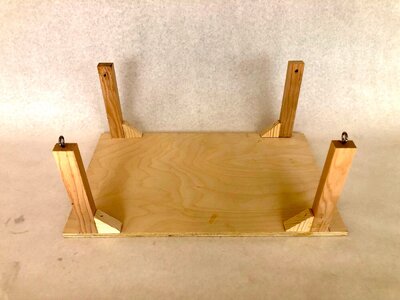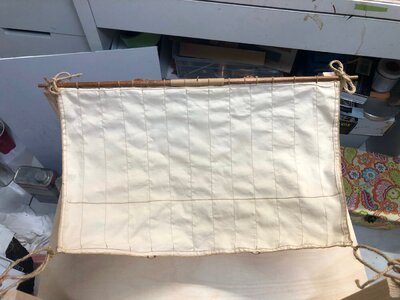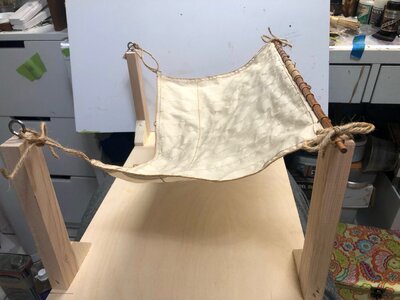This sail works much better with you boat than before. Good job. Where did you find your $100 Singer? Those that I see here are more $$$$. My wife's machine has frozen up and as it is mounted in a stand with legs would be a problem in taking to be repaired. When I sewed the bolt ropes on my BN sails I sewed through the bolt rope which would tend to unwind the line so I had to go back for "repairs" sewing closely around the unraveled portions. For your sail the next step may be to sew fairleads or at least small loops on the outer vertical edges to provide the guides for brailing lines coming down those sides as well as a fairlead at the yard end for the braces lines . . . all a part of the shaping of the sail together with the brailing lines on the sail face (windward0 itself. Do you have small chain loops for those brail loops on the sail face? I found some at the local Hobby Lobby which were in scale for my 1: 6 4 BN. My current Kyrenia is 1:43 so I may have to find some others. I don't recall the scale of your Galilee which will be your factor to work with. You are proceeding very well.
Rich



